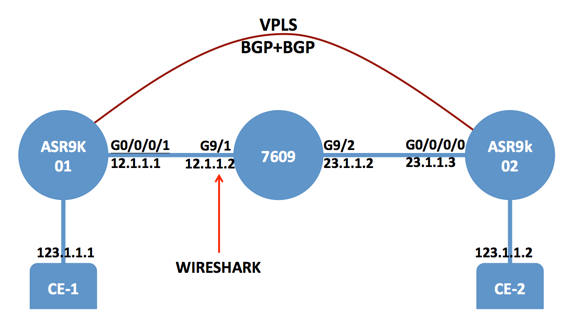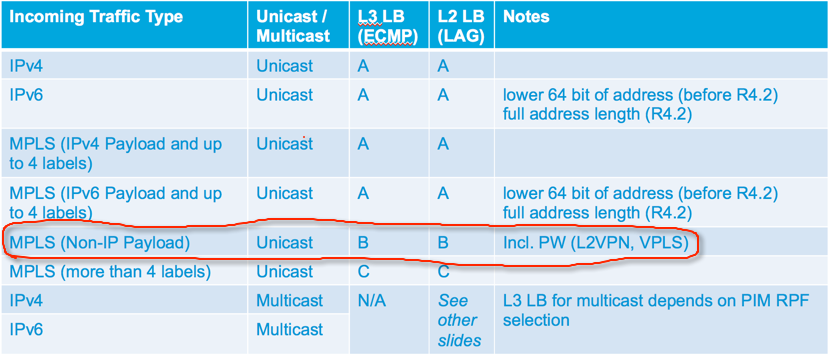18 5 月, 2015
Introduction
Customer run PBB-EVPN on 9001 NV at different site, and interconnect their different DC. Due to only have 1 interconnect link between 9001 NV, so they need a standby link that though Internet by GRE. After checked in lab, EVPN over GRE looks like same as L2VPN over GRE (support from 4.3 on ASR9k), and I had completed test for EVPN over GRE in lab. I will share config and topology.
But please attention: After checked, PBB-EVPN over GRE not offical release, so not suggest do it for customer. For the articles, not only talk about EVPN over GRE, and include how to troubleshooting PBB-EVPN
完整阅读
13 1 月, 2015
Requirement:
1. Capture interface tunnel port each 5 minutes, if traffics > X, will capture other information.
2. Store those information to disk0/harddisk.
In fact, the requirement is very easy by Python + CRT, but customer couldn’t find a PC to continue to run python script, so only use EEM + TCL on ASR9k. And in TCL script, I use two function: foreach and scan.
Follow CLI need config before do script, if you change any variable or script, you need re-config “event manager policy tac_te.tcl username cisco”:
aaa authorization eventmanager default local
event manager environment _cron_entry1 */5 * * * *
event manager directory user policy disk0:
event manager policy tac_te.tcl username cisco persist-time 3600 type user
完整阅读
13 1 月, 2015
If customer want to focus a alarm on their NMS by SNMP Trap, they can config “snmp-server traps syslog”. But if customer no filter feature on NMS, they couldn’t find special alarm in all syslog, now we can use EEM + TCL to match customer requirement.
Follow TCL Script:
::cisco::eem::event_register_syslog pattern $_error_log occurs $_number period $_times maxrun 300
namespace import ::cisco::eem::*
namespace import ::cisco::lib::*
set alarm "***OOB_ERROR Happened!***"
sys_reqinfo_snmp_trapvar var temp oid 1.1.1.1.1.1.1.1 string $alarm
sys_reqinfo_snmp_trap enterprise_oid 1.3.6.1 generic_trapnum 6 specific_trapnum 2 trap_oid 1.1.1.1.1.1.1.1.1.1.1.1.1 trap_var temp
完整阅读
27 12 月, 2014
什么是dummy vlan?
由于EVC平台在入端口可以通过rewrite命令剥离VLAN tag,这样导致在PW中没有任何tag,在Type 4时会有问题,两边VLAN的QOS无法传递给对端,所以就有了这个所谓的dummy vlan,它不是一个真正的VLAN,他只是传递一些QOS字段并且占一个位。那么dummy VLAN长什么样?其实大鹏之前的文章里已经详细介绍了EVC的各种行为,我这里只是介绍抓dummy VLAN的“心路历程”以及dummy VLAN的“样子”~
测试Topology:
起始测试环境为VPLS BGP auto discovery + LDP Sig,在76的入向抓包

测试步骤
1. 默认Type 5,在CE1 ping 带cos 5,ASR9k-1在AC上不配置rewrite,透传的VLAN是否带着802.1p?根据抓包信息,正常带着802.1p,详细看“bgp-ldp-vlan-cos5.pcapng”;另外有个疑问,既然type 5支持VLAN透传,为什么还要Type 4?答案请看文章结束部分
完整阅读
24 12 月, 2014
Intro
很多客户在部署VPLS时,当核心有负载链路或者Bundle时,常常会碰到负载不均的现象,为什么会发生这种问题?首先看下常规ASR9k在不同场景下是用什么元素去做Hash的:

A: src-ip, dst-ip, src-port, dst-port, router_id
B: bottom_most_label, router_id
C: 4th_label, router_id
2020-6-24 更新:Multi-Label MPLS Load-Balancing Hash Algorithm Update
原有ASR9k ECMP的Hash 算法:在MPLS报文时,只有4层label以下的数据报文才可以使用IP 5元组Hash,超过4层的只能用单个label做raw hash。此算法在之前问题不大,label数很少超过4个,但在SR 的环境下,可能会有更多的label,因此BU更新了此场景的Hash算法:
- 5-8个label,不再使用单个label做hash,而是采用IP 5元组来做hash
- 9个或更多label,使用新的hash 算法:multi-label MPLS hashing,label3-5中的label作为raw hash
Tomahawk从623开始使用新的算法;Lightspeed和Xrv9k从652开始使用新的算法
Ok,我们可以看到在L2VPN中,用的是bottom label来做的负载均衡,这是因为系统无法跳过L2VPN中的MAC头,去读L3的IP头。在这里拿Bundle端口举例,说说不同场景下bundle的HASH方法(在9k上,所有HASH动作都是在进口NP上做的,这个HASH结果会直接被出口NP调用):
完整阅读

